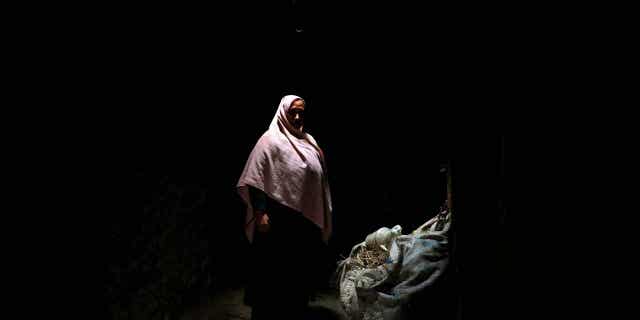In a small village surrounded by velvety snow-capped mountains in Afghanistan’s Bamiyan province, Aziza Rahimi mourns the baby she lost last year after a harrowing birth without medical attention.
“It was too hard for me when I lost my baby. As a mother, I have been feeding the baby in my womb for nine months but then I lost it, it’s too painful,” said Rahimi, 35.
The rugged and remote beauty of the village in the Foladi Valley of Bamiyan comes with deadly barriers for pregnant mothers. A narrow road to the village with few vehicles is sometimes blocked by snow, cutting off a lifeline for hospitals, clinics and skilled health workers.
However, a potentially life-saving improvement is on the way. Rahimi village is one of many around Bamiyan that have sent 40 young women to train as midwives for two years in the provincial capital, after which they will return home.
Isolation can become a death sentence in every difficult birth, say doctors and aid workers, contributing to Afghanistan’s very high maternal and infant mortality rates, among the worst in the world.
Afghan midwife who dreams of becoming a doctor loses her job under the Taliban regime
The United Nations estimates that one Afghan woman dies every two hours during pregnancy and childbirth, making Afghanistan’s maternal mortality rate the highest in Asia.
The trainee midwife program was promoted by the United Nations refugee agency (UNHCR) with the Watan Social and Technical Services Association, a local charity. They hope to expand the programme, which also takes place in neighboring Daikundi province.
Since taking over in 2021, the Taliban authorities have barred women from universities and most charity work, but have granted exemptions in the health sector, and the UNHCR says local health authorities support the plan.

Aziza Rahimi, 35, poses for a photo inside her home in Foladi Valley in Bamiyan, Afghanistan March 2, 2023. Rahimi gave birth, but her baby died soon after. (REUTERS/Ali Khara)
Donkeys
“When the roads are blocked there is obviously no transport, people even use donkeys to take patients to clinical centres, but sometimes there is not even the opportunity to do that,” said Mohammad Ashraf Niazi, chief of the UNHCR office in Bamiyan .
Rahimi, who has five other children, said riding a donkey was out of the question when she was wracked with pain while nine months pregnant in the middle of the night four months ago. Stumbling, bleeding, for two hours at her in-laws’ house after her husband couldn’t find a car or ambulance to take them to the hospital, she gave birth there.
TALIBAN REGULATION WILL BE ‘A LONG SLOW DEATH’ FOR WOMEN, LARA LOGAN SAYS
The child died shortly after. An ambulance arrived too late.
Women who give birth experience a very different situation in the main hospital of the city of Bamiyan, where trainee midwives work together with staff and, with the help of a trainer, learn to assess and guide pregnant women, deliver babies and provide postpartum care.
“We want to learn and serve the people of our village,” said a 23-year-old intern, who walks two hours a day to the hospital. UNHCR has asked the trainees not to be named for security reasons.
In a small hospital clinic, with dozens of women waiting outside, a trainee midwife guides a woman with the help of a picture book on what to expect as she prepares for childbirth under the watchful eye of two trained health professionals.
CLICK HERE TO GET THE FOX NEWS APP
All women at risk of complications are admitted to a maternity ward in a nearby building where another trainee midwife measures the blood pressure of a pregnant patient suffering from an infection. She regularly checks on a woman who has given birth six hours earlier, with her baby nestled beside her.
Many of the trainee midwives, some with young children, have faced logistical and financial challenges, often having to travel enormous distances or live away from home to participate in the programme.
“Initially, I didn’t want to study nursing or be a midwife, but after dealing with problems and pains during pregnancy, I had the desire to study midwifery,” said a 20-year-old trainee mother of an 18-month-old son who she struggled to access treatment in her village. She said many women and families in remote areas lacked the information and support they needed to prepare for a safe birth.
“We have to change this kind of thinking… I want to go to remote areas to treat women who are facing problems.”
